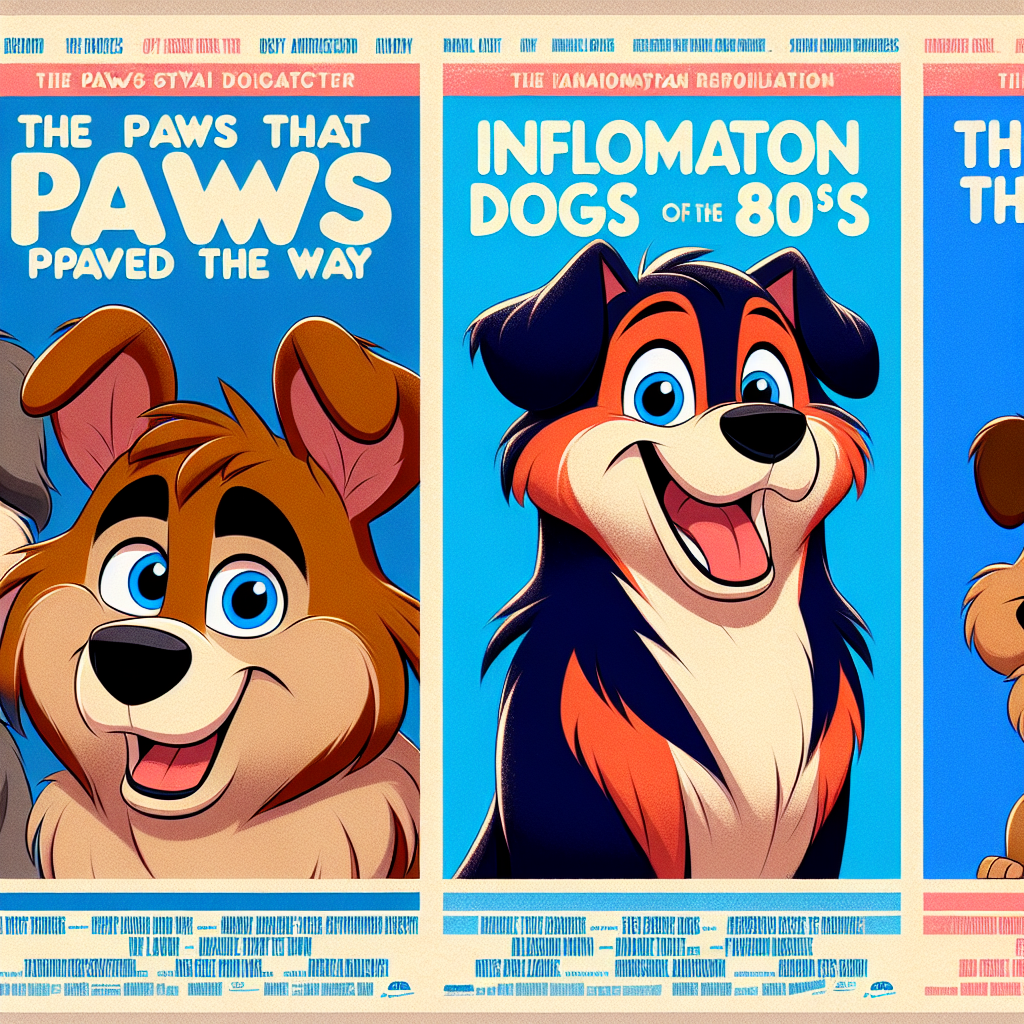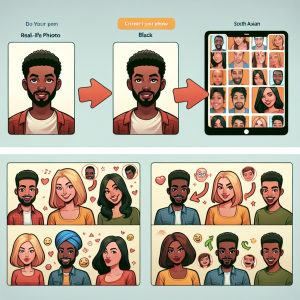Ah, the 70s and 80s! A time when bell-bottoms were a fashion statement, cassette tapes were all the rage, and Saturday morning cartoons became a cherished ritual for kids everywhere. Among the colorful characters of these cherished shows, a delightful pack of cartoon dogs emerged, each filling our screens with laughter, adventure, and unconditional love. From lovable goofballs to clever canines, these furry friends not only entertained us; they also left an indelible mark on pop culture. So grab your favorite snack (perhaps some Scooby Snacks!), and let’s take a nostalgic trip down memory lane to explore the influential cartoon dogs that shaped our childhoods!
The Sneaky Snackers: Scooby-Doo and the Gang
You can’t talk about cartoon dogs from the 70s and 80s without starting with the iconic Scooby-Doo. Created by Joe Ruby and Ken Spears, this lovable Great Dane first hit the airwaves in 1969. However, it was throughout the 70s that he solidified his place in our hearts through various spin-offs and adaptations.
The Mystery Machine Crew
Scooby-Doo and his friends—Shaggy, Fred, Daphne, and Velma—used their wits to solve mysteries and unmask villains, all while appealing to young audiences with their antics. The show artfully combined elements of humor and suspense, smartly weaving Scooby’s cowardly behavior and insatiable appetite into the mix. It wasn’t just the mysteries that captivated viewers; it was the charming and relatable dynamics of the gang.
Scooby-Doo’s Cultural Impact
Scooby-Doo transcended the realm of cartoons, spawning movies, merchandise, and a dedicated fanbase that happily flaunted “Scooby Snacks” at every opportunity. The phrase “Jinkies!” entered our linguistic lexicon, and there’s even a theory about the hidden messages in the show’s plots. So, would we have the fearless group of mystery solvers without Scooby? Absolutely not!
The Hilarious Hijinks of Ren and Stimpy
Fast forward to the early 90s, and we encounter The Ren & Stimpy Show, which brought bizarre, surreal humor into the mix. Yet, it’s impossible to discuss cartoon dogs without mentioning Stimpy, the rotund, lovable cat-dog who stole hearts with his goofy antics.
A Unique Blend of Comedy
The exceptional chemistry between Ren, the hyperactive Chihuahua, and Stimpy, the dim-witted cat, gave rise to countless hilarious moments that revolutionized how cartoon humor was perceived. This dynamic duo thrived on absurdity, balancing each other out in a way that had audiences laughing, gasping, and often scratching their heads.
The Legacy of the Show
Ren and Stimpy may have marked the end of the 80s and the beginning of the 90s, but the impression they left on cartoon culture is undeniable. While Stimpy may be a dog-cat hybrid in concept, his influence reflects how cartoons could embrace irreverence and ridiculousness in ways audiences had never witnessed before.
The Clever Canine: Marmaduke
Not all cartoon dogs were bumbling misfits or cowardly companions. Enter Marmaduke, the Great Dane who graced newspapers and comics before making his way to animated screens in the 80s. Created by Brad Anderson, Marmaduke captured the essence of life with a giant dog.
A Hilarious Take on Everyday Life
Marmaduke represented the hilarious reality of owning a large dog in a too-small house. He frequently wreaked havoc—eating the wrong food, lounging in uncomfortable spaces, and somehow always creating a mess that only a dog could produce. The portrayal was a humorous yet poignant reminder that love comes in all shapes and sizes.
The Cultural Icon
Though Marmaduke may not have had the fame of Scooby-Doo, his relatable antics paved the way for many dog-inspired comics and shows. Marmaduke became the face of comic strip gags and comic foils, proving that dog humor was a goldmine waiting to happen.
The Smartest Dog Around: Brain
From classic and loveable characters to slightly more eccentric ones, Animaniacs provided a delightful twist on dog representation with Brain, the intelligent (yet often failed) mastermind in a pink suit. Accompanied by his dim-witted sidekick, Pinky, Brain’s lab experiments often teetered on the edge between genius and disaster.
The Charm of Brilliance
What made Brain a standout character was his fierce determination to take over the world, paired with Pinky’s relentless optimism. Their contrasting personalities brought out the humor, and audiences adored the comedic dynamic. Brain’s clever plans might always unravel, but it only added to the charm.
Brain’s Legacy
Animaniacs made waves with its satirical takes on pop culture, and Brain’s character became emblematic of the show. His dry wit and nuanced personality made him one of the most beloved cartoon dogs of the era, showcasing that being a canine genius could lead to hilariously failed endeavors.
Spunky & Hunky: The Adventures of Spunky
Ever heard of Rocko’s Modern Life? You might remember Spunky, a cartoon dog of the cutest variety! While the series showed Rocko’s chaotic life in modern society, Spunky always brought a light-hearted and nonchalant energy to the ensemble.
Dog Dilemmas
As the loyal companion of Rocko, Spunky was the epitome of a “woof” sidekick. He often found himself in the middle of silly predicaments but maintained a cheerful disposition throughout every challenge. His character perfectly embodied the quirks of pet ownership.
Spunky’s Impact
Although Spunky might not be as well-known as Scooby-Doo, his inclusion added dimension to the narrative of dog companions in 90s cartoons. His straightforward, carefree attitude became an emblematic trait for dogs in cartoons—those who offer unconditional love, no matter the chaos around them.
The Mystery of the Dog House: Underdog
He may not be a traditional dog in form, but Underdog captured hearts through whimsical storylines and catchy themes. This character, a cartoon version of a superhero canine, provided laughs for children during the 70s and continues to evoke nostalgia.
Superhero Prowess
With his iconic catchphrase, “There’s no need to fear, Underdog is here!” this animated dog harnessed superpowers and relied on his cunning intellect to rescue innocent victims. The contrasting persona of a mild-mannered shoeshine boy turned superhero showcased the depth of narrative that was possible in cartoons.
Pop Culture Legacy
Underdog’s influence extended beyond the cartoon realm, finding its way into merchandise and live-action adaptations. The storyline struck a chord with audiences, establishing a legacy that proved all dogs could be more than just pets; some could become superheroes!
Hot Dogs on the Cartoon Scene: Snoopy
Ah, Snoopy—the lovably whimsical beagle known for his big dreams and wild imagination! Cartoonist Charles M. Schulz forever changed the landscape with his Peanuts comic strip, which embraced a world of anthropomorphic characters, and Snoopy became a fan favorite.
The Dreamer
Snoopy’s outer-worldly adventures as "The World War I Flying Ace" revealed a fascinating complexity to a seemingly simple character. Throughout the 70s and 80s, Snoopy charmed audiences with his unique way of interpreting life, providing a voice that appealed universally.
A Timeless Icon
Whether he was typing away on his doghouse or daydreaming of epic battles, Snoopy is one of the most recognizable cartoon dogs today. Ultimately, his portrayal as a dreamer set the tone for more canine characters in subsequent cartoons seeking to break the mold.
The Legacy of Cartoon Dogs
The 70s and 80s were pivotal in establishing animated canines as more than mere companions to human characters. They provided humor, relatability, and offered significant insight into the bonds between humans and pets.
The Path Toward Diversity in Animation
Each of these characters—Scooby-Doo, Marmaduke, Brain, Spunky, Underdog, and Snoopy—represented a different facet of what it meant to be a dog. They reflected the wide range of personalities, behaviors, and traits found in man’s best friend. This era set the stage for future cartoons to embrace even more diversity in animal characters, paving the way for today’s sophisticated animated storytelling.
Conclusion: A Tail of Transformation
From Scooby-Doo munching on snacks to Snoopy daydreaming on his doghouse, the cartoon dogs of the 70s and 80s enabled a wave of engagement, humor, and affection. They transformed how animated dogs were perceived, paving the way for future generations. These characters remain embedded in our memories, reminding us of the joy dogs bring to our lives—whether in animation or in our everyday experiences. So, as we reminisce about the paws that paved the way, let’s continue to celebrate the uniqueness and culture of cartoon dogs who have become an integral part of our shared nostalgia.
FAQ
What made Scooby-Doo so influential?
Scooby-Doo’s mix of humor, suspense, and relatable teenage characters created a winning formula that resonated with audiences. His ability to intertwine comedy with cliffhangers set the stage for many subsequent mystery-themed cartoons.
How did these cartoon dogs shape pop culture?
These characters introduced new tropes and comedic elements in animated storytelling, from the bumbling goofball to the clever schemer, influencing a multitude of television shows, movies, and even comic strips well beyond the 80s.
Were there any other memorable cartoon dogs from this era?
Absolutely! Other notable cartoon dogs include Snoopy from Peanuts, Underdog the superhero dog, and the colorful adventures within The Jetsons featuring Astro, each contributing to the diverse tapestry of canine characters.
Can we still see the influence of these dogs today?
Yes! The character archetypes established in the 70s and 80s can still be seen in modern cartoons, where dogs continue to take on prominent roles, often blending humor and heart within narratives. The influence of these cartoon dogs persists, inviting new generations to enjoy their unique stories.
Why are cartoon dogs so popular?
Cartoon dogs often embody traits that humans find endearing—loyalty, playfulness, and humor. These characteristics make them relatable and allow audiences to connect with their stories, fostering a love that transcends time and age.








+ There are no comments
Add yours